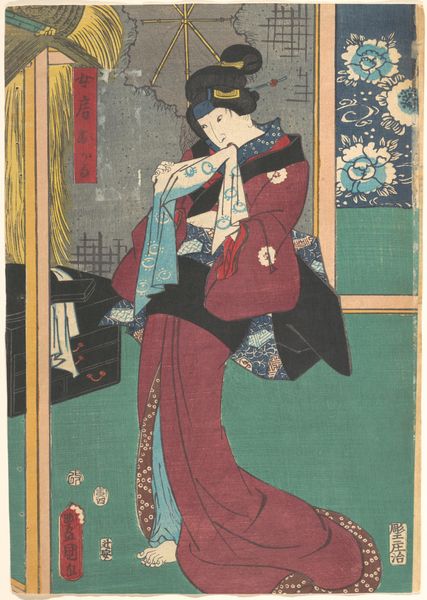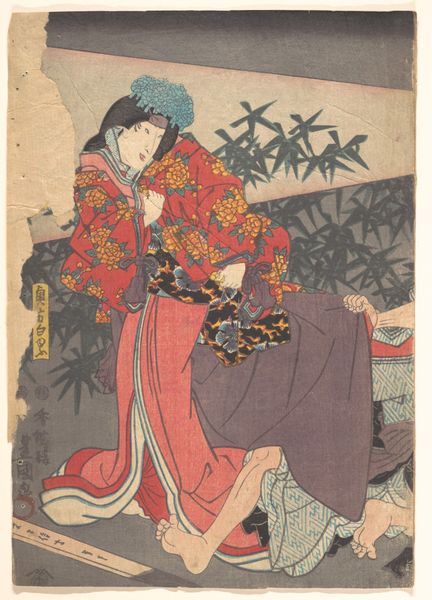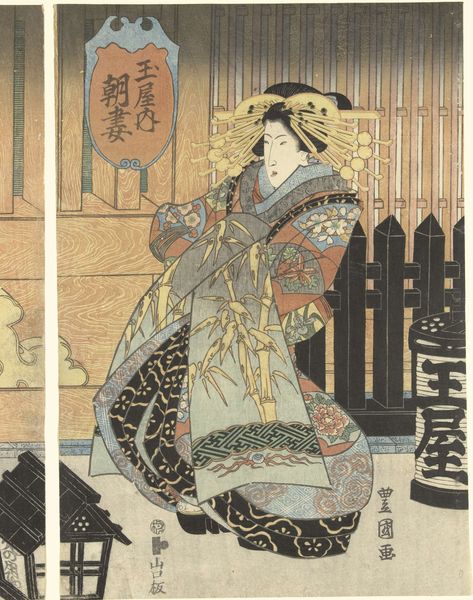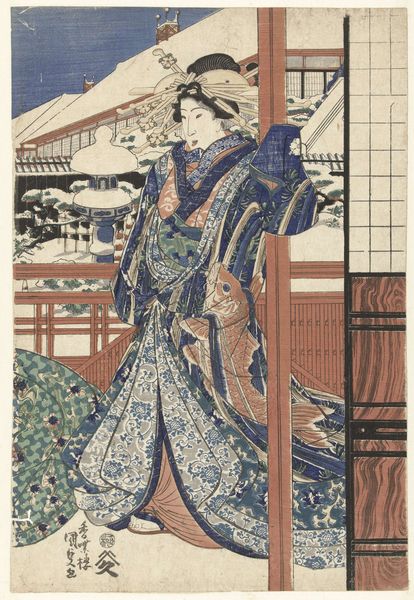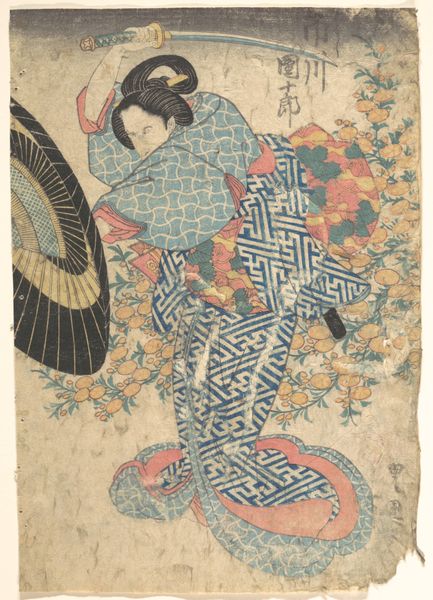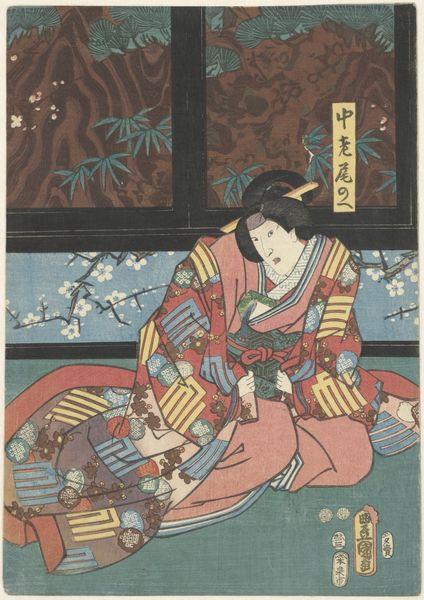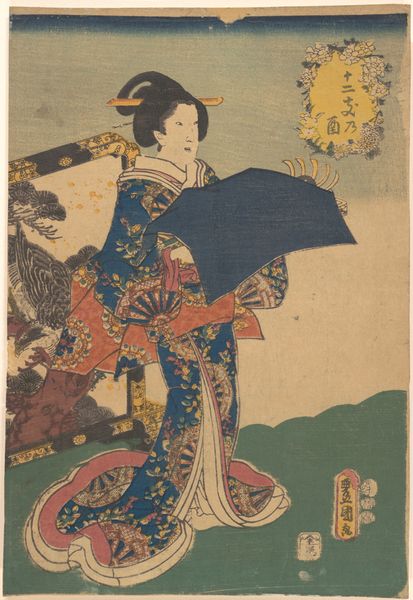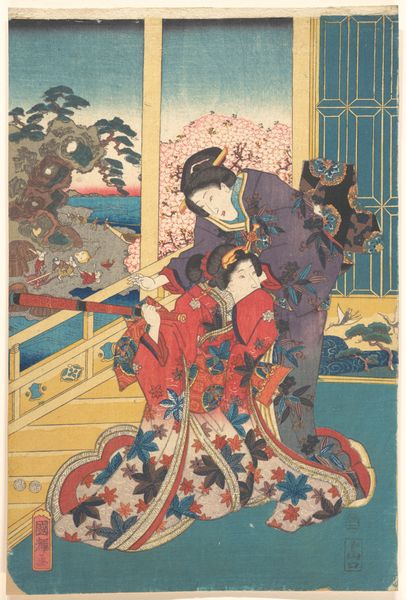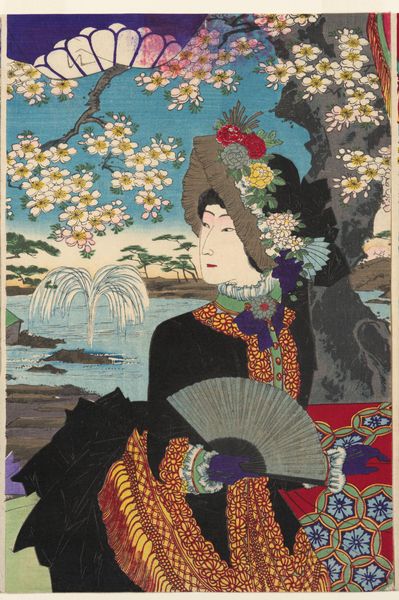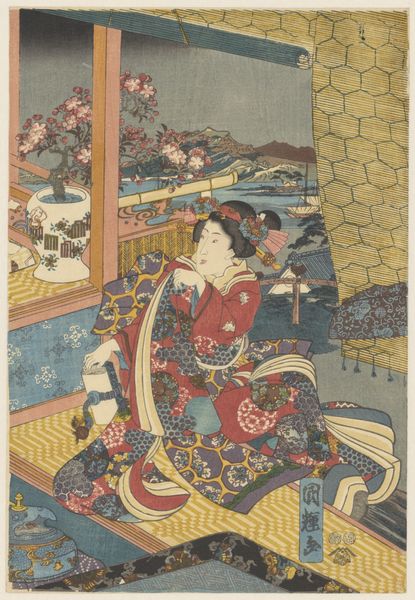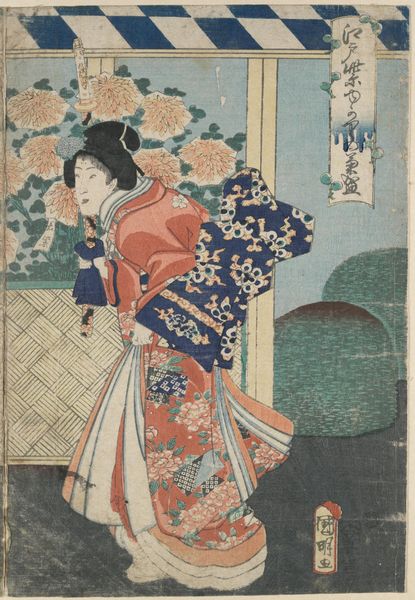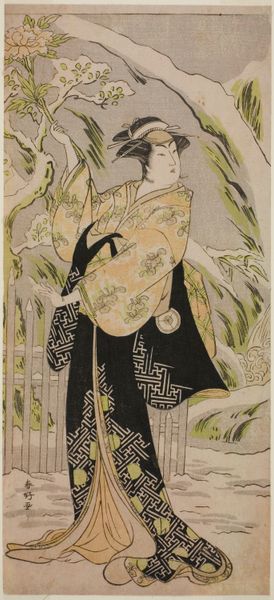
painting, print, woodcut
#
portrait
#
narrative-art
#
painting
# print
#
asian-art
#
ukiyo-e
#
figuration
#
woodcut
#
naive art
#
watercolour illustration
#
genre-painting
Dimensions: height 358 mm, width 252 mm
Copyright: Rijks Museum: Open Domain
Editor: This is "Scene from the Play The Mirror Mountain" created in 1853 by Utagawa Kunisada. It's a woodcut print. I'm immediately drawn to the materiality – the textures seem so vibrant despite being printed. What do you see in this piece, especially considering the social context of its production? Curator: I see a careful orchestration of material realities reflecting the social dynamics of the Edo period. This isn't just a representation of a scene, but a testament to the collaborative labor involved in ukiyo-e production: the artist's design, the woodblock carver's skill, and the printer's careful layering of inks. Look closely; can you discern how the artist used different blocks to build up the textures of the clothing, and even the background elements? Editor: Yes, now that you point it out, the way the wisteria design on the robe almost pops due to its contrast with the black. Was that a conscious commentary on the textile industry? Curator: Perhaps, and on the popular culture surrounding theatre. The "Mirror Mountain" play itself was a consumable product, and this print is a further extension of that, reproduced for a wider audience. Think about who had access to these prints, and how they were circulated. Was it a democratic medium, or were there economic limitations affecting its reach? Consider the paper itself, and where that would have been sourced. Editor: So it’s less about the individual artistry and more about the web of creation and consumption. The materials themselves are speaking to the wider context of Edo society! Curator: Precisely. By looking at the materials and the methods of production, we can unravel stories about labor, economy, and social hierarchy that a purely formal analysis might overlook. Editor: That really changes my perspective. I'm now thinking about all the hands that touched this piece before it even made its way into a gallery. Curator: Exactly! It pushes us to consider art not just as a singular vision, but as a product of collective work within specific material and social conditions. It's almost like archaeology – the deeper we dig into materiality, the richer the understanding of history we excavate.
Comments
rijksmuseum over 2 years ago
⋮
This play is based on a true story. From behind sliding doors, the maid Ohatsu witnesses a quarrel between her mistress Onoe and another lady-in-waiting, who strikes Onoe with a sandal. This terrible humiliation leads Onoe to commit suicide, which Ohatsu avenges. This popular play was performed on the maids’ annual free days, so that they could attend it.
Join the conversation
Join millions of artists and users on Artera today and experience the ultimate creative platform.
